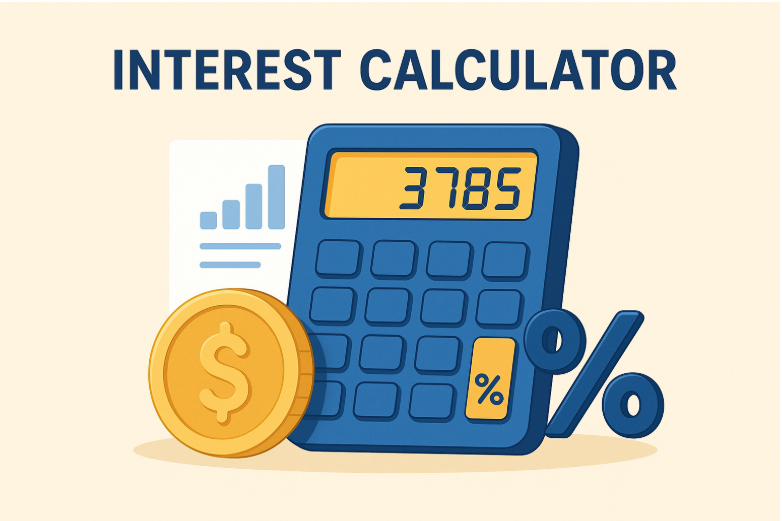
Managing personal finances and debt effectively is crucial for financial stability. Whether you're considering taking out a loan, repaying an existing one, or simply understanding how much interest you'll owe, an interest calculator can be a game-changer. This simple yet powerful tool enables borrowers to get an accurate picture of their loan repayment obligations and plan accordingly. In this article, we’ll explore how to use an interest calculator for loan repayment plans, touch on the benefits of incorporating a compound calculator, and offer tips to streamline your financial journey.
An interest calculator is an online or offline tool designed to compute the amount of interest you’ll owe on a loan or earn from an investment. It helps borrowers estimate monthly payments and overall interest costs based on factors such as loan amount, interest rate, and loan tenure. This tool is not only efficient but also easy to use, as it typically requires essential inputs to deliver results in seconds.
Using an interest calculator comes in handy before committing to a financial contract. It provides clarity on the financial responsibilities tied to a loan or investment, empowering users to make smarter decisions.
There are two primary types of interest calculators:
Formula:
Simple Interest = P×R×TP \times R \times TP×R×T, where:
Formula:
Compound Interest = P×(1+R)TP \times (1 + R)^TP×(1+R)T - PPP, where:
Choosing between these two depends on your loan's terms and structure. Many modern interest calculators allow you to toggle between simple and compound interest calculations.
Follow these steps to use an interest calculator effectively:
Before you begin, collect the necessary details about your loan. These typically include:
If your loan involves simple interest, select a simple interest calculator. If the loan is structured around compounding interest, use the compound calculator. Be sure that the calculator you choose supports your loan terms.
Enter the details into the respective fields of the calculator. For example:
Once you input all the data, the interest calculator computes the interest and breaks down your repayment schedule. You’ll typically see:
One of the major benefits of using an interest calculator is the ability to tweak inputs and explore different loan scenarios. For example:
A compound calculator is essential when your loan involves compounding interest. Here’s why it helps:
Using an interest or compound calculator saves time, effort, and stress. The key advantages include:
Using tools like interest calculators can make loan management easier, but a few additional strategies can further improve your financial health:
An interest calculator is an invaluable tool for anyone navigating loans or managing debt repayment plans. Whether you’re dealing with simple or compound interest, this tool simplifies complex calculations, enabling you to make informed decisions. For loans with compounding interest, a compound calculator adds precision and clarity to your financial planning.
Ultimately, interest calculators empower you to take charge of your financial future by providing accurate insights into what you owe and helping you create a repayment plan that aligns with your goals. So, the next time you’re faced with a loan financial decision, make sure to utilize an interest calculator to pave the way to financial wellness!
This post has been authored and published by one of our premium contributors, who are experts in their fields. They bring high-quality, well-researched content that adds significant value to our platform.






